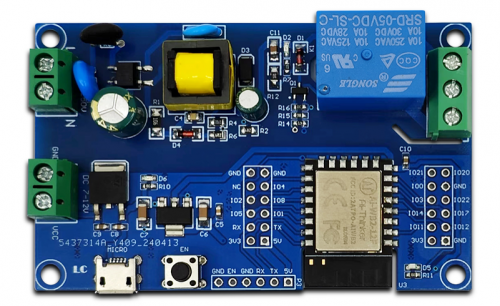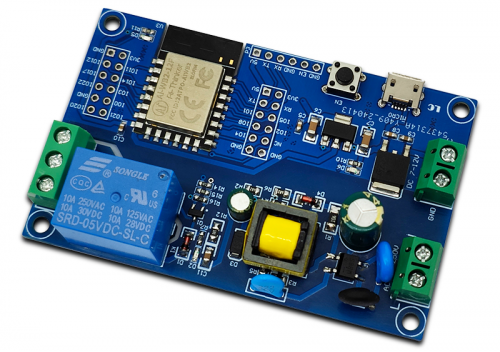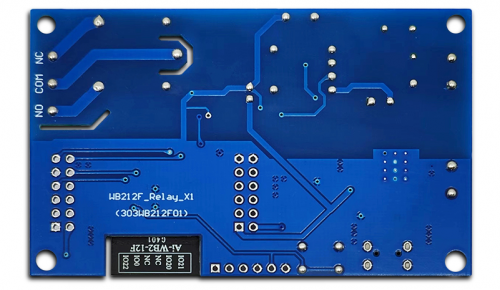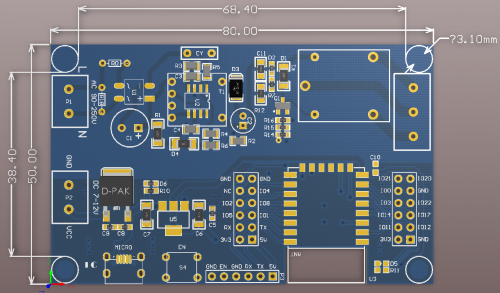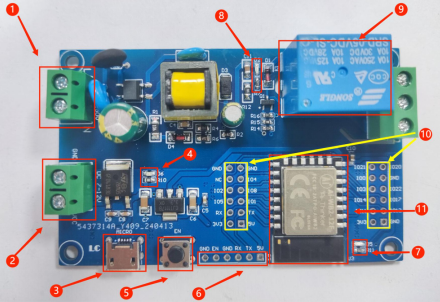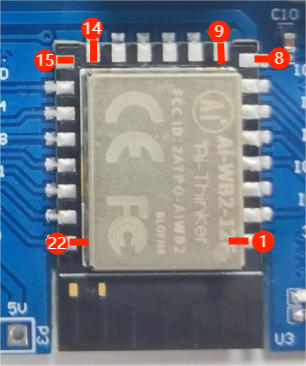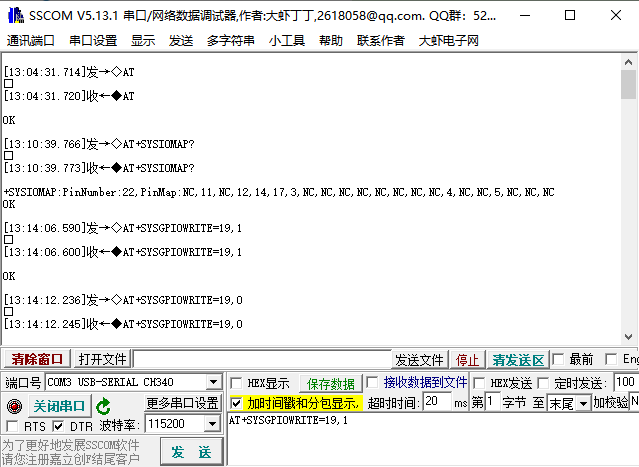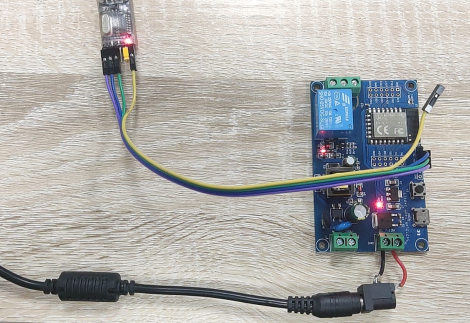LC-WB-5-1
Contents
Product Name
LC AC+DC power supply WB2-12F single relay module WB2 development board WB2-12F secondary development
About
LC AC+DC powered WB2-12F single relay module is equipped with Ai-WB2-12F module, with all I/O ports leading out, onboard EN enable button and programmable LED indicator light.
Supports AC90-250V power supply+DC7-28V power supply mode. Suitable for WB2 secondary development learning, smart home wireless control and other occasions
View
Front view
Side view
Reverse image
Introduction and Explanation
Size: 50 * 80mm/34 g (positioning hole: 3mm)
Interface Introduction
1. AC power supply port: 90-250V AC power
2. DC power supply port: 7-28V DC
3. Micro-USB power supply port
4. Power indicator light
5. EN button: default as chip enable, high level effective
6. UART program burning port
7. Programmable LED indicator light (IO12 pin control)
8. Relay indicator light
9. Single channel 5V relay
10. All IO pins
11.MCU:Ai-WB2-12F(SMD)
Functional Features
- Onboard the new series of Ai-WB2-12F modules, with a large capacity of 4M Byte Flash;
- All I/O ports and UART program download ports of the WB2-12F module are exported for easy secondary development;
- Onboard AC-DC power module, supporting AC90-250V power supply mode, onboard DC-DC power module, supporting DC7-28V power supply mode.
- Onboard EN enable buttons and programmable LED indicator lights;
- WB2-12F supports the use of BLDevCube burning tool and provides factory firmware;
- Onboard single channel 5V relay, output switch signal, suitable for controlling loads with operating voltage below AC 250V/DC30V;
Module testing
1. Power on the module and prepare a USB to TTL serial port module to plug into the computer USB.
The connection method between the serial port module and the development board is as follows:
| TTL serial port module | WB2-12F development board |
| GND | GND |
| TX | RX |
| RX | TX |
2. Open the SSCOM serial port data debugger, select the correct port and baud rate, click "Open Serial Port", and prepare to send AT commands
3. Send "AT" and return an "OK"; Then send 'AT+SYSIOMAP?' to query the IO pin mapping relationship table of the development board:
The order of all pins is sorted counterclockwise from the top left corner of the module, with pin numbers starting from 1 and corresponding chip pin numbers 1-22.
If the module does not have a corresponding chip pin, it is set to NC, as shown in the following figure:
4. The relay is controlled by the IO5 pin to control the switch state. Here, setting the IO5 pin (i.e. pin 19) to a high level will activate the relay and send "AT+SYSGPOWRITE=19,1".
The relay and relay indicator light will turn on; Send 'AT+SYSGPOWRITE=19.0', and the relay and relay indicator light will turn off:
The above module testing process is normal
- For more AT instruction sets and examples, please refer to the official website of Anxinke:aithinker
Firmware development and burning methods
1. Ai-WB2 series module secondary development SDK source code address:[1]
2. Ai-WB2 series module secondary development Linux development environment setup:[2]
3. Ai-WB2 series module secondary development, Windows development environment setup:[3]
4. Ai-WB2 series module secondary development programming guide:[4]
5. Ai-WB2 series module firmware burning guide:[5]
6. Ai-WB2 series module secondary development firmware burning software download:[6]
7. Video tutorial on secondary development of Ai-WB2 series modules and setting up a Windows development environment:[7]
8. Ai-WB2 series module firmware burning video:[8]
9. For other details, please refer to the official website of Anxinke:[9]
User Manual Download
For more product information, please refer toBaidu Cloud Drive Extraction code: cf98
